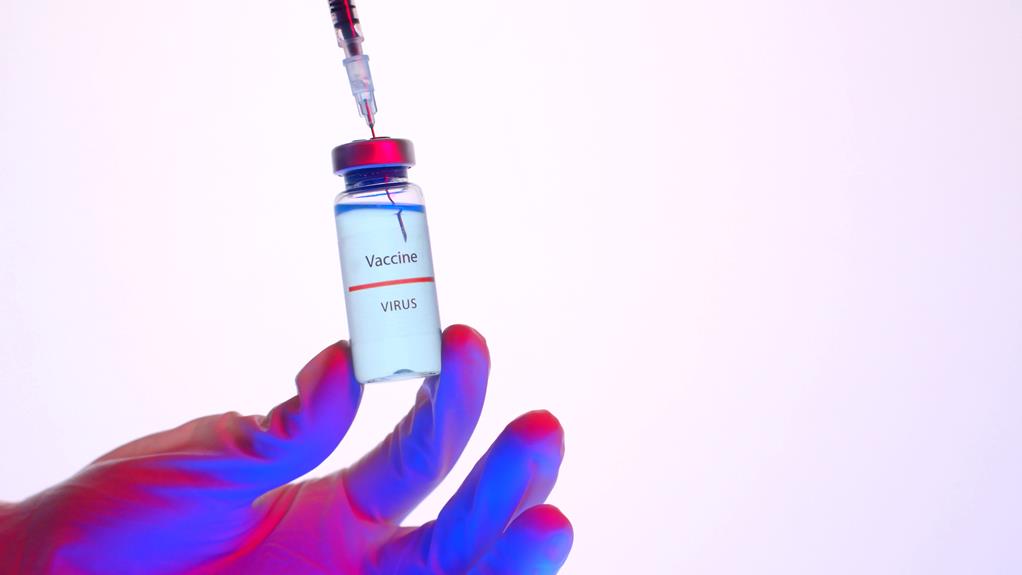IV Flush Syringe
Intravenous (IV) flush syringes, indispensable tools in healthcare, present a paradox of life-saving potential marred by contamination risks. This article delves into the complexities of IV flush syringes, examining their role, benefits, and the inherent risks. Through case studies, we will explore significant recalls due to manufacturing failures and bacterial contamination, emphasizing the need for improved practices and stringent oversight in the medical device industry.

Key Takeaways
- IV flush syringes are used to clear out intravenous lines before and after administering medication drips or fluids, as well as between administering multiple medications to prevent reactions.
- There have been numerous recalls of prefilled IV flush syringes due to issues such as mislabeling, improper packaging, potential bacterial contamination, compromised sterility, and particulate matter in the product.
- The recall of Nurse Assist normal saline IV flush syringes in 2016 led to an outbreak of Burkholderia cepacia infections, which can be deadly for immunocompromised individuals.
- AM2PAT Inc., a manufacturer of syringes, failed to meet proper manufacturing standards, leading to the sale of contaminated syringes and resulting in penalties and forfeiture for the company. This case underscores the need for better manufacturing practices and oversight in the medical device industry.
Understanding the Role of IV Flush Syringes
In the realm of healthcare, IV flush syringes play a critical role in maintaining the patency of intravenous lines and preventing potential drug interactions, thereby ensuring the safe and effective administration of medications to patients. These medical tools are indispensable for achieving best practices in patient care. However, there is room for potential advancements in their design and utilization to further enhance patient safety. For example, innovations that minimize the risk of bacterial contamination or provide more efficient flushing could be explored. While these advancements are being pursued, healthcare professionals must continue to adhere to best practices, such as proper sterilization and handling procedures, to optimize the use of IV flush syringes and ensure the best possible patient outcomes.
Detailed Overview of IV Flush Syringes
Amid the vast array of medical tools and equipment, IV flush syringes stand out for their pivotal role in healthcare, and to fully appreciate their significance, an in-depth exploration of their function, design, and usage is crucial. These syringes serve to maintain the patency of intravenous lines, preventing blockage from blood clots or medication residue. The design is simple, comprising a plunger, barrel, and needle, filled with a saline solution. In terms of usage, they are employed before and after drug administration via IV lines. Potential innovations could include pre-filled syringes with antimicrobial solutions, reducing infection risks. Furthermore, alternative solutions to current IV flush syringes are being explored, such as needleless systems, promising to enhance patient safety and comfort.
The Functionality of IV Flush Syringes
Both simple and crucial, every IV flush syringe functions to ensure the cleanliness and patency of intravenous lines, thereby preventing potential medical complications such as blood clots and medication interaction. The advantages of IV flush syringes include their convenience and their role in maintaining line patency, reducing the risk of line occlusion. However, they also have limitations, including the potential for microbial contamination if not used correctly. In clinical settings, best practices call for nurses to follow aseptic techniques when using IV flush syringes, including proper hand hygiene and using a new syringe for each flush. Despite these precautions, challenges remain, such as ensuring the correct syringe volume and solution are used for each patient.
The Importance of IV Flush Syringes in Medical Practice
The critical role of IV flush syringes in medical practice embodies an abstract notion of safety, enhancing patient care, and maintaining the efficacy of intravenous therapeutic interventions. The potential benefits of these syringes are manifold; they reduce the risk of infection, prevent medication interaction, and ensure the smooth delivery of IV medications. Despite their importance, it's essential to consider alternative options in case of supply shortages or recalls. Alternatives like manually prepared flushes, though time-consuming, can act as a viable option. Therefore, while IV flush syringes are evidently crucial in medical practice, the need for vigilance in their use and awareness of other options should not be underestimated.
Advantages and Disadvantages of Using IV Flush Syringes
Understanding the advantages and disadvantages of using IV flush syringes is fundamental to making informed decisions in patient care and hospital supply management. The advantages of IV flush syringes include their role in maintaining patency of intravenous lines and preventing medication interactions. They are user-friendly, time-effective and enhance patient safety. However, the disadvantages may involve the risk of air embolism if not properly used, potential for bacterial contamination, and product recalls, which can impact patient care. Best practices for using IV flush syringes encompass thorough training of healthcare professionals, stringent adherence to asepsis during administration, and continuous monitoring for recalls and guidelines. The balance between advantages vs disadvantages of IV flush syringes should guide their utilization in healthcare settings.
Key Features of IV Flush Syringes
Equipped with a plunger for manual control of fluid flow and designed for single-patient use, IV flush syringes are fundamental instruments in healthcare, particularly in maintaining the patency of intravenous lines and ensuring sterile delivery of medications. Key features include their pre-filled nature, reducing the risk of contamination, and the presence of a lock or luer slip to ensure secure connection to the IV device. As potential innovations emerge, features like safety shields or retractable needles may be incorporated to enhance patient and provider safety. In terms of best practices, it is crucial for healthcare providers to be well-versed in the correct usage of these syringes, ensuring IV lines are properly flushed and locked to maintain sterility and prevent infection.
Potential Risks and Side Effects of IV Flush Syringes
Despite the crucial role of IV flush syringes in healthcare, risks and side effects, such as potential bacterial contamination and patient discomfort, can arise from their use and must be carefully managed. Patient discomfort can be minimized using best practices for IV flush syringe use, which include gentle injection and appropriate patient communication. However, the risk of bacterial contamination, a serious issue that can lead to infections, necessitates the exploration of IV flush syringe alternatives. Some alternatives could be the use of pre-filled, sterile flush syringes, or employing needleless systems. Regardless of the chosen alternative, adherence to stringent sterilization and storage protocols is vital to ensure patient safety and significantly reduce the risks associated with IV flush syringes.
A Closer Look at IV Flush Syringe Recalls
In the past decade alone, a staggering number of over 30 million prefilled IV flush syringes have been recalled, highlighting the significant challenges in ensuring safety and sterility in their production and use. The causes for these recalls range from potential bacterial contamination, particulate matter in the product, to improper packaging. These challenges underscore the need for stringent regulatory standards and effective prevention strategies. Implementing rigorous quality control measures and adhering to strict sterilization practices can mitigate the risk of contamination. Additionally, ensuring that manufacturing processes meet regulatory standards is crucial in maintaining the safety of these medical devices. Constant vigilance and swift response to recall notices can further protect patients from potential harm associated with these devices.
Exploring the Causes of IV Flush Syringe Contamination
Contamination of IV flush syringes, a common healthcare tool, can occur due to a variety of reasons, including improper manufacturing practices, inadequate sterilization, and poor handling procedures. These contamination factors can lead to serious legal consequences, such as lawsuits, penalties, and loss of reputation for manufacturers. It's not uncommon for healthcare providers, and patients, to hold manufacturers legally accountable for any harm caused. Therefore, stringent prevention measures are necessary to avoid contamination. These measures may include regular quality checks, proper sterilization techniques, and rigorous training for handling procedures. In addition, adherence to regulatory standards and guidelines is vital. Ensuring product safety is not only a legal obligation but also a moral responsibility for manufacturers.
Case Study: Nurse Assist Normal Saline IV Flush Syringe Recalls
Why did Nurse Assist recall their Normal Saline IV Flush Syringes, and what were the implications for patients and healthcare providers? In 2016, Nurse Assist Inc. voluntarily recalled over 300,000 of these syringes due to potential contamination with Burkholderia cepacia bacteria. This led to an outbreak of infections, significantly impacting patients' health, particularly those who were immunocompromised. Besides the immediate health risks, this recall brought about potential legal implications. Healthcare providers faced lawsuits for using contaminated syringes, thus highlighting the need for stringent quality control and proactive measures. To prevent such incidents, strategies for prevention could include regular product testing, rigorous supplier audits, and immediate action upon detection of potential contamination.
The Impact of Bacterial Contamination in IV Flush Syringes
Throughout the years, the bacterial contamination of IV flush syringes has posed significant clinical risks, leading to serious health implications for patients. Prevention measures, such as stringent sterilization processes, regular equipment checks, and rigorous quality control, are crucial in mitigating these risks. The role of healthcare providers is pivotal in detecting and addressing bacterial contamination. They must be vigilant in maintaining hygiene standards, monitoring for signs of infection in patients, and promptly reporting any suspected contamination. Moreover, they should stay informed about product recalls and ensure that only reliable, high-quality syringes are used. The discussion around the impact of bacterial contamination in IV flush syringes emphasizes the importance of these preventive measures and the proactive role of healthcare providers.
Production Failures: A Case Study of AM2PAT Inc
In this section, we delve into the case of AM2PAT Inc., a notable example of production failures in the manufacturing of IV flush syringes. AM2PAT, under lax industry regulations, produced syringes under unsanitary conditions, leading to widespread bacterial contamination. The legal consequences were severe as the company faced substantial penalties and eventual closure. The case highlighted the dire need for stricter adherence to industry regulations, especially in the realm of medical device manufacturing. It underscored the importance of regular inspections and rigorous quality control to prevent production failures. Consequently, the AM2PAT incident served as a wake-up call, prompting regulatory bodies to enforce stricter measures to ensure the production of safe, sterile, and reliable IV flush syringes.
The Legal Implications of IV Flush Syringe Contamination
Potential bacterial contamination of IV flush syringes presents significant legal implications, including product liability claims, regulatory fines, and potential criminal charges. Preventing contamination is not only vital for patient safety but also to avoid these legal consequences of contamination. Healthcare providers and manufacturers can be held accountable for negligence and non-compliance with safety standards. Product liability claims can arise if a contaminated syringe causes harm to a patient. Regulatory bodies can impose fines for violations of manufacturing and hygiene standards. In severe cases, criminal charges may be filed, particularly if there is evidence of intentional misconduct or gross negligence. Therefore, stringent measures should be in place for preventing contamination to mitigate these legal risks.
Strategies for Improving IV Flush Syringe Safety
Enhancing patient safety and mitigating legal risks require a comprehensive approach to improving IV flush syringe safety, involving both rigorous manufacturing oversight and diligent clinical practice. Strategies start with improving manufacturing processes, focusing on hygiene standards, quality control, and staff training. Preventing bacterial contamination is fundamental, requiring sterilization protocols to be rigorously followed and regularly audited. Furthermore, traceability mechanisms should be enhanced, allowing rapid response to any issues identified post-production. Clinically, healthcare providers must adhere to strict aseptic technique during syringe use to prevent contamination. Lastly, an effective recall system, ensuring swift removal of faulty products from the market, contributes significantly to safety. Thus, a multifaceted strategy can substantially enhance IV flush syringe safety.
Future Trends in IV Flush Syringe Development and Use
Technological advancements and evolving healthcare practices are shaping the future trends in IV flush syringe development and use, providing opportunities for increased safety and efficacy. Future innovations may include syringes with in-built safety features to prevent bacterial contamination and ensure sterility. Additionally, design advancements can facilitate ease of use, minimizing the potential for medical error. Best practices in manufacturing processes will be essential, with stringent quality controls to prevent recalls. The use of data analytics for real-time monitoring of syringe use can also ensure effective inventory management, reducing shortages. As healthcare continues to evolve, the focus will be on creating IV flush syringes that are safe, efficient, and aligned with the needs of an ever-advancing medical landscape.
Frequently Asked Questions
How Does the Patient Feel When an IV Flush Syringe Is Being Used?
When discussing the sensations experienced during an IV flush, patients commonly report a cold feeling as the saline solution enters the bloodstream. The impact of the syringe material on this feeling is negligible. The primary sensation is related to the temperature and speed of the fluid being administered. Some patients may also experience a slight discomfort or pressure, while others may hardly notice the procedure. The experience can vary depending on individual sensitivities.
Are There Any AlternatIVes to Using IV Flush Syringes in Medical Practice?
In medical practice, alternatives to traditional syringes are being explored. This Syringe Alternatives Analysis explores innovations like needleless systems, which reduce infection risks, and elastomeric pumps, which regulate fluid delivery. Additionally, the Flush Procedure Innovations have introduced devices that automatically clear and maintain catheter potency. These alternatives aim to improve patient safety and comfort, while ensuring effective delivery of medications and fluids. However, they still require rigorous testing and evaluation for widespread acceptance.
Is There Any Specific Protocol for Patients to Follow Before and After Using an IV Flush Syringe?
Before and after the use of a medical device, patients should adhere to specific protocols to ensure safety and effectiveness. In the case of an IV flush syringe, patients typically do not administer this themselves. It's the responsibility of healthcare professionals who follow the standard medical protocols, which include checking the flush syringe composition and staying updated on IV flush advancements to ensure the best patient care.
Can Patients Use IV Flush Syringes at Home, or Is It Strictly for Hospital Use?
While home preparation techniques for medical procedures are becoming more common, the use of IV flush syringes primarily remains within the purview of healthcare professionals. Due to the risk of infection and the need for aseptic technique, it is generally not recommended for patients to use IV flush syringes at home. Additionally, proper syringe disposal methods must be followed to ensure safety. Thus, IV flush syringes are typically used in hospitals or other clinical settings.
How Are the Manufacturers Held Accountable for the Quality and Safety of IV Flush Syringes?
Manufacturers of medical devices, such as IV flush syringes, are held accountable for their product's quality and safety through various regulatory standards and quality control measures. Regulatory bodies, such as the FDA, enforce strict compliance to manufacturing standards and routinely inspect facilities. In case of lapses, manufacturers may face penalties, product recalls, or legal actions. Quality control measures are also implemented internally by the manufacturers to ensure the safety and efficacy of their products.
Conclusion
In the realm of healthcare, IV flush syringes hold monumental significance, yet their potential risks cast ominous shadows. The haunting specter of bacterial contamination, mislabeling, and improper packaging looms large, punctuated by grave incidents such as the AM2PAT case. However, with enhanced manufacturing practices and rigorous oversight, a dawn of improved safety and efficacy for these crucial medical devices can be envisaged, illuminating the path towards a future of secure and effective patient care.

This post has been generated by AI and was not reviewed by editors. This is Not legal advice. Please consult with an attorney.




